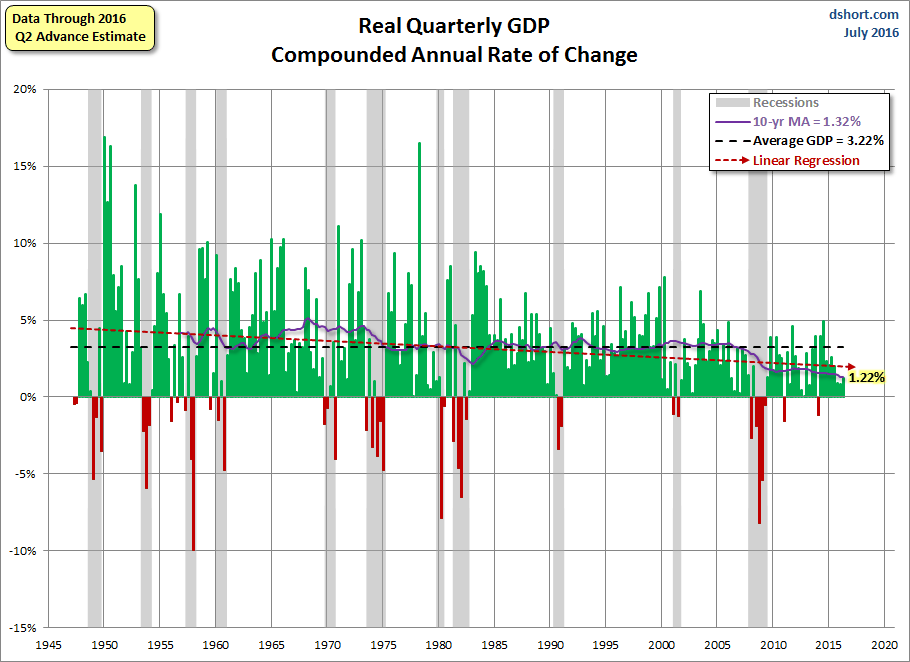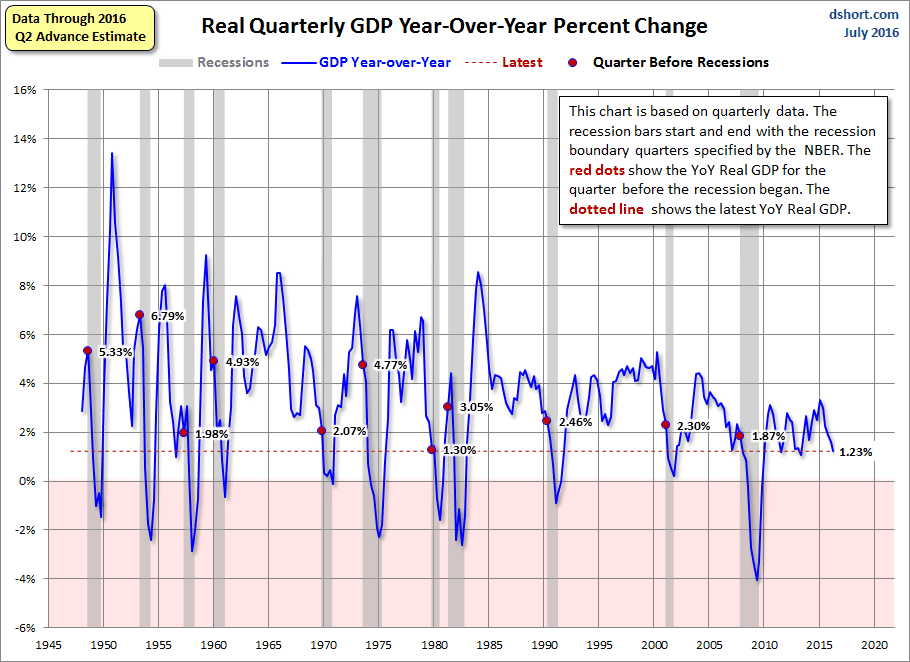The Advance Estimate for Q2 GDP, to one decimal, came in at 1.2 percent, up from 0.8 percent for the Q1 Third Estimate (a downward revision from 1.1 percent). Today's number was far below most mainstream estimates, with Investing.com posting a consensus of 2.6 percent. However, the Atlanta Fed's GDPNow forecast was revised downward yesterday to 1.8 percent from 2.3 percent the day before. Today's update includes data revisions from Q2 2013 to the present.
Here is an excerpt from the Bureau of Economic Analysis news release:
Real gross domestic product increased at an annual rate of 1.2 percent in the second quarter of 2016 (table 1), according to the "advance" estimate released by the Bureau of Economic Analysis. In the first quarter, real GDP increased 0.8 percent (revised).
The Bureau emphasized that the second-quarter advance estimate released today is based on source data that are incomplete or subject to further revision by the source agency (see “Source Data for the Advance Estimate” on page 2). The "second" estimate for the second quarter, based on more complete data, will be released on August 26, 2016.
The increase in real GDP in the second quarter reflected positive contributions from personal consumption expenditures (PCE) and exports that were partly offset by negative contributions from private inventory investment, nonresidential fixed investment, residential fixed investment, and state and local government spending. Imports, which are a subtraction in the calculation of GDP, decreased. [Full Release]
Here is a look at Quarterly GDP since Q2 1947. Prior to 1947, GDP was calculated annually. To be more precise, the chart shows is the annualized percent change from the preceding quarter in Real (inflation-adjusted) Gross Domestic Product. We've also included recessions, which are determined by the National Bureau of Economic Research (NBER). Also illustrated are the 3.22% average (arithmetic mean) and the 10-year moving average, currently at 1.32 percent.
Note: The headline 1.2% real compounded rate of change is 1.22% at two decimal places.
Here is a log-scale chart of real GDP with an exponential regression, which helps us understand growth cycles since the 1947 inception of quarterly GDP. The latest number puts us 15.0% below trend, the largest negative spread in the history of this series.
A particularly telling representation of slowing growth in the US economy is the year-over-year rate of change. The average rate at the start of recessions is 3.35%. All eleven recessions over this timeframe have begun at a higher level of real YoY GDP.
In summary, the Q2 GDP Advance Estimate of 1.2 percent was a major disappointment to most economists.



